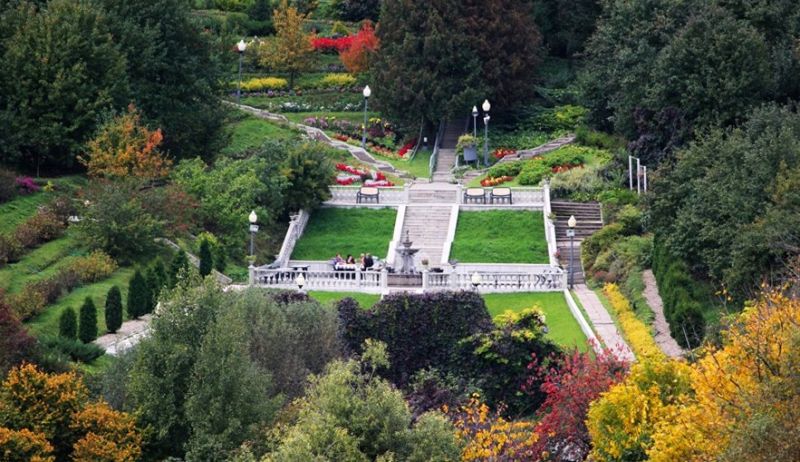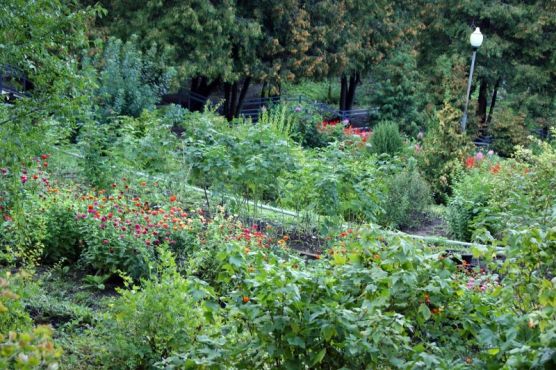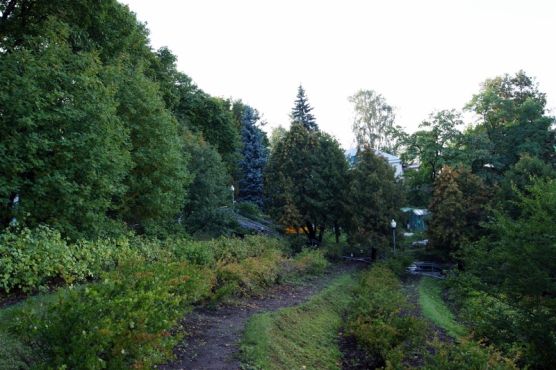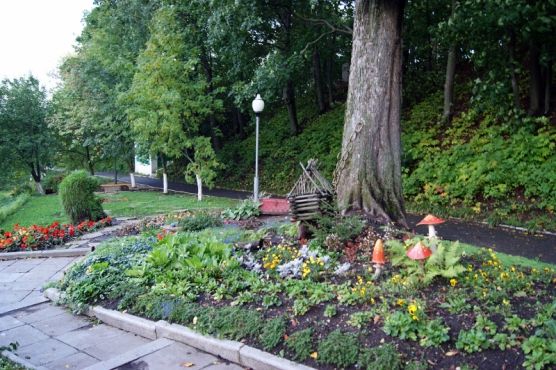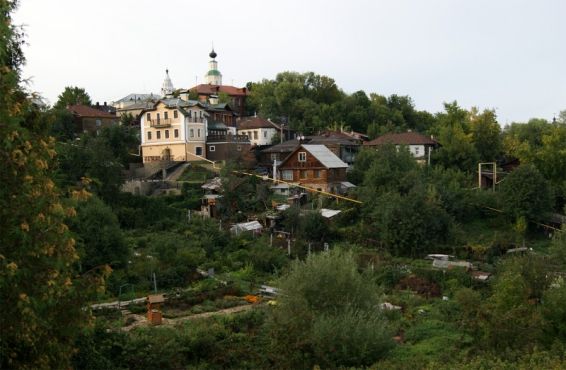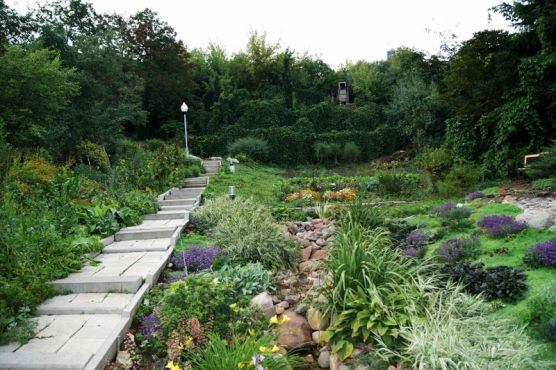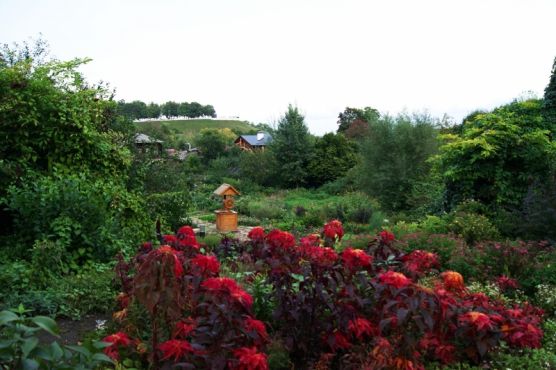Patriarchal Garden
- Address:
- Vladimir, Kozlov Val street, 4a, 5
- GPS:
- 56.12456113, 40.40034171
- Phones:
- +7 (4922) 32-36-80, +7 (4922) 32-21-87, +7 (4922) 32-49-80
The Patriarchal Garden is located on a high southern slope in the center of ancient Vladimir, next to the Kozlov rampart, and is truly a decoration of the city. In the relief basin, which is occupied by the garden, the height differences reach 33 meters. The garden has an area of almost four hectares. Thanks to the unique landscape and microclimate, it was possible to create the richest collection of plants.
According to legend, the garden was laid as far back as the second half of the 12th century by Prince Andrey Bogolyubsky, above it towered the prince's court. There is a version that the cherry trees, without which it is now impossible to imagine Vladimir, were brought by the prince from Kiev, and with them – the tradition of breaking cherry orchards in princely courts and monasteries.
The history of the garden, confirmed by archival documents, is just over 400 years old. The Patriarchal Garden, which belonged to the Nativity of the Virgin monastery, already existed in Vladimir at the end of the 16th century. Since the monastery was administered by the patriarchs, the garden, in which the higher clerics liked to rest, was called the Patriarchal. In the 17th-19th centuries, the garden was also called the Bishops' and the Synodal.
In the Patriarchal Garden there were no exotic plants, but only common for the middle band cherry-trees, pears, apple-trees and other fruit-berry trees and bushes. Of course, the priority culture was cherries. There were five varieties of cherries in the Patriarchal Garden: Roditeleva (which is often called Vladimir cherry), Saika, Bel, Levinka and the famous Basil’s cherry (Vasilievsky cherry), brought by the monks of the Monastery of St. Basil from Suzdal.
During the blooming cherry orchards gave Vladimir a special charm. The inhabitants of Vladimir invented an original way of protecting cherry berries from birds, as many travelers wrote about. A special tower was placed in the garden, ropes, hung with rags, bundles of straw, and any clattering objects, were stretched from this tower to a fence or trees. The watchman on the tower occasionally pulled the ropes and shook with a special rattle, creating noise and ringing, scaring away birds. Therefore, during the ripening of cherries in the city, entirely covered with cherry orchards, there was such a noise both day and night that it was compared to the "festival of witches and goblins".
The life of the Patriarchal Garden passed through the ages. Until now, a century old hollowed lindens with a diameter of more than a meter have remained.
In the Soviet era, the Patriarchal Garden was nationalized and until the 1940s, one of the strongholds of the Vladimir Agricultural Experimental Station was located at this site. After the severe frosts of 1938, 1939, 1940 and 1941, the garden suffered very badly. On the eve of the Great Patriotic War the Patriarchal Garden was left unattended, some of the trees were frozen, some – were dried up. During the war, a city dump appeared on the site of the garden, the trees were cut down for firewood for heating houses and hospitals.
In March 1948, the First All-Union Meeting of Young Michurinians-Gardeners was held in Vladimir, by decision of which the Garden of the 16 Union republics was laid in place of the Patriarchal Garden in honor of the friendship of the young people of different nationalities. Since 1954, the garden has become the Children's Park named after the 16 Union republics. On its territory the Vladimir city station of young people was created.
In 1995 the city station of young people received a license to conduct educational activities in the field of additional education. In 2003 the historical name "Patriarchal Garden" was returned to the station.
Currently, about 130 varieties of fruit and berry trees and shrubs and about 110 varieties of flower-ornamental plants are grown in the garden. The microclimate of the garden allows trees to coexist peacefully in a relatively small area – the best garden varieties of apple, pear, cherry, currant, gooseberries, sea buckthorn, mountain ash and numerous exotic plants – manchurian nut, cedar, almonds...
In the spring-autumn period the Patriarchal Garden is fragrant with aromas and pleases with multicolor. The garden is ideal for romantic walks, there are many secluded arbors and benches. Wedding photo sessions are often arranged in the garden.
In 2014, in front of the Patriarchal Garden, in the center of the recreation area on the Spassky hill, a monument to Vladimir Cherry (sculptor – I.A. Chernoglazov) was installed as a symbol of Vladimir. The area became part of the walking pedestrian zone along Georgievskaya Street.
In 2015, the reconstruction of the Patriarchal Garden was started. Already in May 2016 the Patriarchal Garden was transformed: the first stage of reconstruction of large objects on the area of 3 hectares was completed. All the garden paths were updated. Visitors can already walk around the new artificial pond and admire the cascade of fountains. On the slopes of the garden new comfortable staircases with handrails are built. Now, people with disabilities will be able to overcome these numerous descents and ascents, special hoists are installed for them.
In 2017 a conference hall with 200 seats was built, where environmental forums and meetings with the best Russian experts and scientists will be held. The plans include the construction of a new educational building for young naturalists, a greenhouse, a parking lot and an external water supply system. The Patriarchal Garden will become a unique scientific and educational center and the most beautiful place in Vladimir for a holiday.
The entrance to the Patriarchal Garden for tourists is paid. Ticket price:
- for adults - 150 rubles;
- for children, students and pensioners - 80 rubles.
 Tourism portal of the
Tourism portal of the